#Wood Parquet Flooring
Explore tagged Tumblr posts
Text
https://homment.com/F8pSHqFQtcuLsou5gQX9
#Timber Flooring Christchurch#Solid Timber Flooring NZ#Engineered Oak Flooring NZ#Engineered Wood Flooring NZ#Solid Oak Flooring NZ#Solid Wood Flooring NZ#Reclaimed Parquet Flooring#Oak Parquet Flooring#Wood Parquet Flooring
0 notes
Text










One of the buildings to which Paleizenplein ("palaces square") in Brussels owes its name is the Palace of the Academies, which currently houses most of Belgium's academies.
From 1828 to 1830 it was the home of Crown Prince William of Orange-Nassau and his consort Anna Paulowna, daughter of Tsar Paul and Grand Duchess of Russia whrn Belgium (or Southern Netherlands) were part of the United Kingdom of the Netherlands which was created after the battle of Waterloo in 1815. Later It was also temporarily the home of Crown Prince (of Belgium which was established in 1830) Leopold, at that time titled Duke of Brabant, to which Hertogsstraat (" Duke's street") refers. The palace is a late but pure example of neoclassicism, the palace style of the Enlightenment. This architectural gem was drawn according to pure geometric proportions, Renaissance symmetry and axiality.
The neoclassical building was built between 1823 and 1828 on the site of the Park Abbey refuge house. The state architects Charles Vander Straeten and Tieleman Franciscus Suys also carried out one of the renovations of the adjacent Royal Palace of Brussels in the same period. It was financed to the amount of 1,215,000 guilders with resources from the United Kingdom of the Netherlands and on behalf of William I. The palace was furnished for his son, Crown Prince Willem and his Russian wife Anna Pavlovna. On the night of September 25 to 26, 1829, the palace was broken into. The thieves stole Anna Pavlovna's jewelry from her bedroom and escaped with it.
After the Belgian Revolution, the palace came under sequestration. An army regiment were given shelter there. It would take until 1842 before a compromise was found. The building was transferred to the Belgian state and the sumptuous contents went to the Kingdom of the Netherlands. The contents were transferred to the Kneuterdijk Palace and after the death of William II to the Noordeinde Palace, where many pieces can still be admired.
From 1848 to 1852, the palace was the location of the first regiment of Jagers-Carabiniers. King Leopold II refused to move into the building that was offered to him in 1853. It was decided to use it for ceremonies and celebrations. The interior was renovated under the supervision of architect Gustave De Man. However, in 1862 the Museum of Modern Art was housed in the palace, pending the completion and furnishing of the Royal Museums of Fine Arts of Belgium. It would still house works of art until the Royal Academies of Belgium were allowed to settle there (royal decree of April 30, 1876).
Interior:
In the monumental stairwell hangs a portrait of Empress Maria Theresa of Austria, in honor of the original founder of the Académie Impériale et Royale des Sciences et Belles-lettres de Bruxelles in 1772. The Throne Room (not to be confused with the Belgian Throne Room in the adjacent Royal Palace of Brussels) is the original banquet room of the palace. Adjacent were the private rooms of William II, of which, among other things, the toilet with enormous wall mirror of his wife Anna Pavlovna of Russia has been preserved. The large Marble Hall on the second floor is covered with Belgian brown marble and white marble from Carrara. The parquet, constructed with oak and tropical wood (rosewood and amaranth wood), has a motif of small tree leaves. The vault is covered with gold leaf and tympanums. The hall has excellent acoustics and is regularly used for concerts. In addition, there are a number of smaller rooms, including the Maria Theresa Hall when the Academy classes meet separately, and the Leopold Hall and Albert Hall for smaller committee meetings. The old permanent secretary's office also radiates grandeur. The building also contains about sixty smaller and larger office spaces.
#neoclassical#neoclassico#neoclassicism#architectural history#architecture#historic buildings#belgium#europe#historical interior#bruxelles#brussels#brussel#bruselas#marble#gold#netherlands#palace#palaces#chandelier#lustre#history#historical#palazzo#palais#floors#parquet flooring#wood flooring#flooring
11 notes
·
View notes
Photo

by Elizabeth Johnson-Wold
#original photographers#photographers on tumblr#Bishop's Palace#Galveston TX#historical buildings#interiors#staircase#ornate#carved wood#stained glass#parquet flooring
20 notes
·
View notes
Photo

Milan Home Bar
#Example of a mid-sized trendy open concept light wood floor and white floor living room design with a bar#multicolored walls and a wall-mounted tv pietra basaltina#open space#home bar#parquet africano#colonne cucina#hardwood
2 notes
·
View notes
Photo

Open Closet in Paris
#An illustration of a large#modern women's dressing room with a dark wood floor#open cabinets#and blue cabinets. parquet en bois foncé#fauteuil voltaire#dressing turquoise#applique murale chromée#dressing bleu#mannequin en fer forgé
2 notes
·
View notes
Text
Hardwood Parquet Flooring in Virginia
Elevate your interiors with elegant hardwood parquet flooring from Royal Interiors in Virginia. Our intricate designs bring unique character to any room. Contact us today to explore our parquet flooring options and transform your home with this timeless flooring style.
#Install Floor Coverings Virginia#Restore Old Hardwood Floors#Install Granite Counter Tops#Gym flooring#Engineered wood sales and installation#Refinish Old Hardwood Floors#Hardwood Plank Flooring Virginia#Hardwood Parquet Flooring Virginia
0 notes
Text
A Complete Guide to Engineered Wood Flooring: Benefits, Styles, and Installation
Engineered wood flooring has become one of the most popular choices for homeowners and interior designers due to its combination of durability, aesthetic appeal, and ease of installation. Unlike traditional hardwood, engineered wood consists of multiple layers that improve its stability and resilience, making it ideal for modern homes that need to balance style with practicality. This guide will walk you through everything you need to know about engineered wood flooring, from its construction and benefits to the various styles available and the best methods for installation. Whether you're looking to upgrade a single room or outfit your entire home, engineered wood flooring offers a versatile and cost-effective solution.
Engineered wood flooring is designed to offer the aesthetic beauty of real hardwood combined with modern technology to enhance durability and ease of installation. It consists of a top layer of real wood veneer, supported by multiple layers of plywood, fiberboard, or high-density fiberboard (HDF). These layers are pressed together under high pressure to create a plank that mimics solid wood but is more resistant to changes in moisture and temperature. This construction makes engineered wood an excellent choice for various environments, including areas with fluctuating humidity, such as basements or kitchens.
The growing popularity of engineered wood floors can be attributed to several factors. Firstly, it offers a wide range of design options, as the top layer can be crafted from various wood species, including oak, maple, and walnut. Secondly, it’s easier to install than solid hardwood, as it can be installed using floating, glue-down, or nail-down methods. Lastly, its cost-effectiveness, especially when considering long-term durability and maintenance, makes it a smart investment for homeowners.
Understanding the Construction of Engineered Wood Planks
The construction of engineered wood flooring is what sets it apart from traditional hardwood. The top layer, or "wear layer," is a thin slice of real wood that provides the visual and tactile qualities of genuine hardwood. Beneath this layer, the core consists of multiple layers of plywood or high-density fiberboard (HDF), which are stacked in a crisscross pattern. This structure gives engineered wood its enhanced stability and resistance to warping, bending, or shrinking, which can occur with solid wood in humid or dry conditions.
The thickness of the wear layer varies, typically ranging from 1mm to 6mm. Thicker wear layers allow for the floor to be sanded and refinished more times, extending its lifespan. Meanwhile, the core layers are designed to enhance structural integrity. The crisscross pattern of the plywood layers minimizes expansion and contraction, making it ideal for environments with fluctuating temperatures. The base layer, typically made from softwood or another hardwood species, adds further stability to the plank.
Benefits of Engineered Wood Flooring
Engineered wood flooring offers numerous benefits over traditional solid wood and other flooring options. One of the primary advantages is its dimensional stability. Unlike solid hardwood, which expands and contracts with changes in temperature and humidity, engineered wood is less prone to these fluctuations due to its layered construction. This makes it suitable for installation in areas where solid wood would typically not be recommended, such as basements or rooms with radiant heating.
Another key benefit is its versatility in design. Since the top layer is real wood, engineered flooring offers the same authentic appearance as solid hardwood, allowing you to choose from a wide range of species, finishes, and textures. Additionally, engineered wood is available in wider plank sizes, giving homeowners more flexibility when creating their desired aesthetic.
From a cost perspective, engineered wood is often more affordable than solid wood, especially when considering the long-term value. It also requires less maintenance and, depending on the thickness of the wear layer, can be sanded and refinished several times over its lifespan. Engineered wood planks are easier to install, making them ideal for DIY projects or quicker installations in both residential and commercial settings.
Engineered Wood Flooring Styles
Engineered wood flooring comes in a variety of styles, each suited to different design aesthetics. Some of the most popular styles include classic, modern, rustic, and distressed finishes. Classic engineered wood floors, like oak and maple, offer a timeless look that works well in both traditional and contemporary spaces. These floors often have a smooth finish and are available in various shades, from light to dark, allowing you to match the flooring to your interior décor.
For a more modern look, wider and longer planks are trending, as they create a streamlined, spacious feel. Exotic woods like bamboo and teak are also gaining popularity, adding a unique and luxurious touch to modern interiors. Rustic and distressed styles, on the other hand, provide a more textured and natural appearance, with features like hand-scraped surfaces and wire-brushed finishes that give the floor a weathered, lived-in look.
Customization options for engineered wood also include various finishes, from high gloss to matte, and different edge profiles, such as beveled or square edges, allowing for a truly personalized look.
How to Choose the Right Engineered Wood for Your Space
Choosing the right engineered wood flooring for your home or office requires careful consideration of factors like room usage, foot traffic, and existing interior design. If you’re installing flooring in a high-traffic area such as a hallway or living room, consider opting for engineered wood with a thicker wear layer that can withstand frequent use and be refinished multiple times. For spaces prone to moisture, like kitchens and basements, engineered wood with water-resistant core materials will perform better than traditional hardwood.
Your choice of wood species will also influence the overall look and feel of the room. Light-colored woods, such as oak or ash, can make a space feel larger and more open, while darker woods, such as walnut or mahogany, can add warmth and elegance to the space. The plank size and finish should complement your existing furniture and décor. For smaller rooms, wider planks can make the area appear more spacious, while narrower planks may be better suited to larger spaces to create a balanced look.
Conclusion
Engineered wood flooring offers the perfect combination of beauty, durability, and flexibility, making it a top choice for homeowners and designers alike. Its layered construction provides enhanced stability, making it suitable for a variety of environments, while its diverse styles and finishes ensure a perfect match for any interior design. Whether you're looking for a cost-effective alternative to solid hardwood or need a flooring solution for high-moisture areas, engineered wood delivers both performance and aesthetic appeal. With proper care, this flooring option can provide decades of use, making it a wise investment for any space.
#jordans flooring#jordans wood flooring wimbledon#pro tek flooring#flooring wimbledon#wimbledon flooring#jordan wood#bespoke wooden flooring#wandsworth wood flooring#wandsworth flooring#bespoke wood flooring#woodflooring#engineered wood flooring london#wood flooring#wooden floors london#hardwood flooring london#parquet flooring#engineered wood flooring#herringbone flooring#laminate flooring#lvt flooring#luxury vinyl flooring#oak flooring#engineered herringbone#engineered wood#solid wood flooring#white oak flooring#wood laminates#real wood flooring#grey wood floors
1 note
·
View note
Text
Dubois Wood Floors adds elegance to your space by using chevron wood floors
Dubois Wood Floors realizes the elegance of Chevron Wood Flooring. From high-end chevron parquet laminate and solid wood options, the company brings into perspective the timeless elegance and durability that will grant beauty, symmetry, and magic to any room. Discover the ideals in dubois floorings today and find out what makes each and every one a perfect flooring solution to transform your space into a sophisticated haven, crafted with quality, and style, by Dubois Wood Floors!
#Chevron Wood Flooring#chevron parquet laminate flooring#parquet flooring chevron#chevron parquet flooring
0 notes
Text
Flooring is your home’s foundation, shaping aesthetics, comfort, functionality, and overall well-being. Investing in new flooring is not just an upgrade; it’s life-changing. This blog will explore how new flooring can elevate your life. Engineered wood flooring in Dubai enhances mood and productivity and contributes to making a healthier environment by navigating the uncountable advantages of stepping onto a brand-new floor. Join us to gain valuable insights about the right flooring choice. It can significantly enhance your living space, making every step part of a better, more fulfilling home experience.
#Parquet Wood Flooring in Dubai#Wooden Polishing Services In Dubai#SPC Flooring Dubai#Engineered wood flooring in Dubai#Waterproof Flooring in Dubai
1 note
·
View note
Text





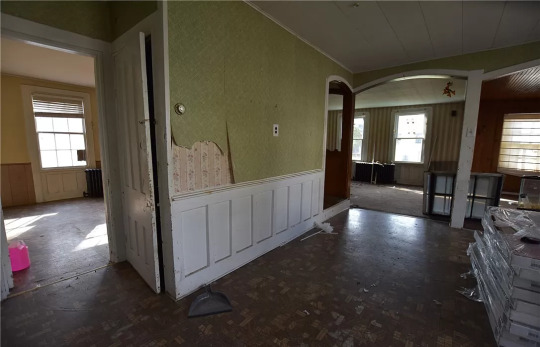


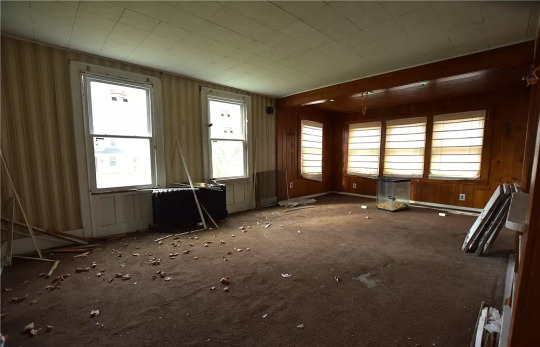


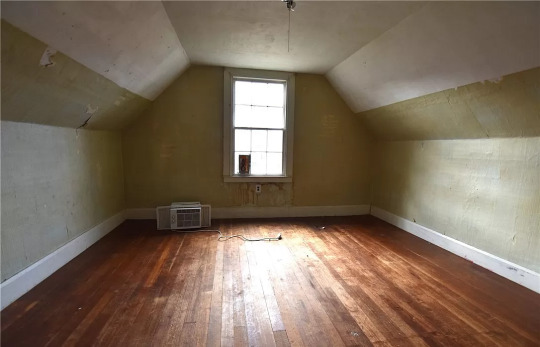

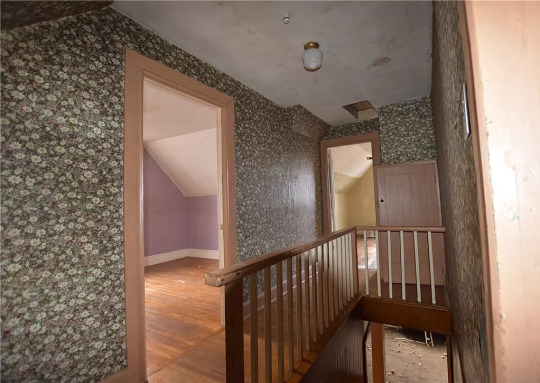
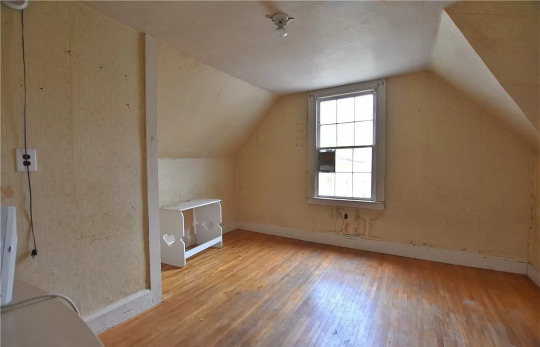


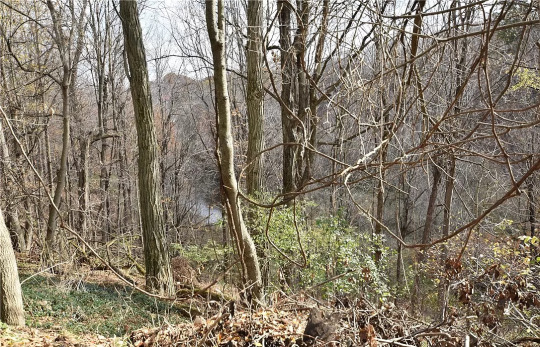
228 Main St., Theresa, New York, USA. Built 1820.
#buildings#architecture#house#interiors#exteriors#1820s#1820#New York#USA#carpeted flooring#hardwood flooring#i honestly cant tell if the flooring in the room connected to the kitchen is weird linoleum or weird wood parquet#wallpaper#wood panelling#wood ceiling#built in cabinet#wainscoting
1 note
·
View note
Text
Parquet Wood Flooring Vs. Laminate: Making The Right Choice

One notable quality of parquet wood flooring is its classic elegance. Its geometric pattern mosaic, created from wood fragments, lends a classic feel to any area. This type of flooring is known for its long lifespan. For homeowners, it is a wise investment because, with the right care, it could last for many years.
Read more - Visit here
0 notes
Text
Traditional Living Room - Living Room
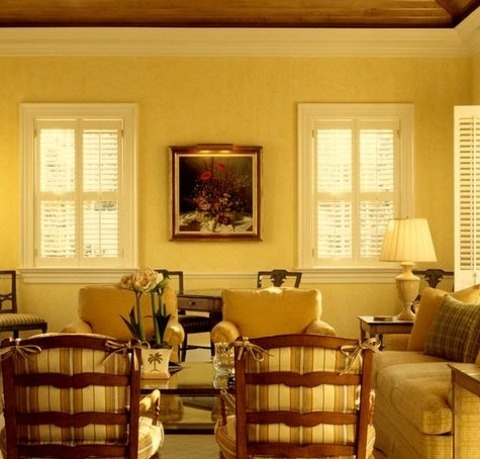
Example of a mid-sized, traditional enclosed living room with a medium-tone wood floor, yellow walls, no fireplace, and a hidden television.
0 notes
Text
Elevate Your Home with Wood Floor Refinishing: A Comprehensive Guide

When it comes to transforming the ambiance of your living space, few things rival the timeless charm of hardwood floors. Their warm hues and natural beauty can breathe life into any room. However, as the years roll by, even the most well-loved wood floors may start losing their luster, succumbing to scratches, dings, and the wear and tear of daily life. Fear not, for in the world of home improvement, there exists a magical solution – hardwood floor installation new york.
Unveiling the Beauty Within
Wood floor refinishing is akin to giving your hardwood floors a second chance at glory. It involves sanding down the worn-out surface, repairing imperfections, and applying a fresh coat of finish. The result? A floor that looks as good as new, if not better.
The Process Unveiled:
Assessment and Preparation:
Before the magic begins, experts evaluate the current state of your floors. They identify areas that need special attention, like those stubborn stains or deep scratches. Think of it as a doctor diagnosing the health of your beloved wooden companions.
Sanding Away Imperfections:
The first step of the makeover involves sanding the floor. Imagine it as a spa day for your hardwood – a rejuvenating massage to get rid of the accumulated stress and signs of aging. The sanding process is meticulous, ensuring every nook and cranny gets the attention it deserves.
Filling and Repairing:
Just like a skilled surgeon, the refinishing team addresses any flaws. Gaps, cracks, and dents are filled and repaired, leaving behind a seamless surface. It's like the healing touch after the sanding massage.
Choosing the Perfect Finish:
This is where the fun begins! You get to choose the finish that suits your style. It's like picking the perfect outfit for your floors. Whether you prefer a glossy, matte, or satin finish, the options are as diverse as a fashion catalog.
Applying the Finish:
With precision and care, the chosen finish is applied. It's like the final strokes of an artist's brush, bringing the masterpiece to life. The floor begins to glow, radiating a renewed vibrancy.
Drying and Curing:
Patience is key. Just like a freshly baked cake needs time to cool, your refinished floor requires time to dry and cure. Once it's ready, you'll be walking on a work of art – a testament to the marriage of craftsmanship and nature.
Why Consider Wood Floor Refinishing?
1. Cost-Effective Elegance:
Think of wood floor refinishing as a facelift for your home. Instead of splurging on new floors, refinishing offers a budget-friendly alternative. It's like giving your space a luxurious makeover without breaking the bank.
2. Preserving the Past:
Old is gold. If your home boasts historic hardwood, refinishing allows you to preserve its character. It's like restoring an ancient artifact – embracing the imperfections that tell a story while enhancing its overall appeal.
3. Environmental Friendliness:
In a world obsessed with sustainability, refinishing stands out. It minimizes waste by revitalizing existing materials, contributing to a greener planet. It's like recycling, but for your floors.
4. Quick Transformation:
Time is of the essence. Unlike the lengthy process of installing new flooring, refinishing is relatively quick. It's like a weekend project that yields a remarkable transformation, leaving you with more time to enjoy your revitalized space.
5. Adaptability to Trends:
Style evolves, and so do flooring trends. Refinishing allows you to keep up with the times without committing to a complete overhaul. It's like updating your wardrobe with accessories – small changes, big impact.
The Search for the Right Professional
In the vast landscape of wood floor refinishing services, finding the right professional is crucial. It's akin to selecting a conductor for a symphony – the maestro who orchestrates the harmony of your home's rejuvenation. Here are some key considerations:
Experience Matters:
Choose a seasoned artist. An experienced refinishing expert possesses the knowledge to navigate various wood types and address unique challenges. It's like hiring a chef with years of experience to ensure your floor gets the gourmet treatment it deserves.
Customer Reviews Speak Volumes:
The audience's applause matters. Before entrusting your floors to a professional, delve into customer reviews. Think of it as getting testimonials before selecting a movie to watch – the experiences of others can guide you to a blockbuster service.
Transparency in Pricing:
No hidden fees. A reliable professional provides a clear breakdown of costs from the beginning. It's like ordering from a menu with transparent prices – no surprises at the end.
Licensing and Insurance:
Safety first. Ensure the refinishing professional is licensed and insured. It's like having a safety net – protecting you and your home from any unforeseen circumstances.
Eco-Friendly Practices:
A touch of green. If sustainability matters to you, inquire about the professional's approach to eco-friendly practices. It's like choosing a product with a 'green' label – ensuring your floor makeover aligns with your environmental values.
Maintaining the Radiance
Congratulations! Your hardwood floors have undergone a magnificent transformation. Now, to ensure they remain the showstoppers of your home, a little maintenance goes a long way.
Regular Cleaning:
Dust is the enemy. Keep your floors sparkling by regularly sweeping or vacuuming. It's like brushing your teeth – a simple routine for long-lasting freshness.
Avoiding Moisture:
Water and wood don't mix. Wipe up spills promptly and avoid excessive water during cleaning. Think of it as protecting your floors from the rain – a little prevention goes a long way.
Furniture Pads:
Gentle footsteps. Attach felt pads to the legs of your furniture to prevent scratches. It's like giving your floors shoes – a small layer of protection against scuffs and marks.
Area Rugs:
A touch of elegance. Place area rugs in high-traffic areas to minimize wear. It's like having a red carpet for your floors – a stylish barrier against the hustle and bustle of daily life.
Regular Inspections:
Detect issues early. Periodically inspect your floors for any signs of wear or damage. It's like going for a check-up – catching and addressing concerns before they become major issues.
Conclusion: A Symphony of Renewal
In the grand composition of home improvement, wood floor refinishing emerges as a crescendo, breathing new life into the heart of your living space. It's not merely a service; it's a transformative experience, an ode to the enduring beauty of hardwood.
So, if your floors are whispering tales of yesteryears or showing signs of wear, consider the enchantment of wood floor refinishing. It's the art of renewal, the alchemy that turns aging into elegance, and the promise of a home that ages like fine wine – gaining character and charm with each passing year.
As you embark on this journey, remember that every creak beneath your feet tells a story – a story of resilience, renewal, and the enduring allure of wood floor refinishing. Cheers to another year of timeless beauty in your home!
#hardwood floors queens#wood flooring queens ny#how much does it cost to stain a staircase#wood floor refinishing service#repairing parquet floors
0 notes
Text
Why Choose Engineered Wood Flooring for Your Home?
Choosing the right flooring for your home can be a daunting task, with countless materials and styles available on the market. Engineered wood flooring has become a popular option for homeowners looking for the timeless appeal of hardwood, but with additional durability and versatility. Combining the beauty of natural wood with the resilience of modern engineering, this type of flooring offers a wide range of benefits that make it suitable for nearly any room in the house. In this article, we’ll explore why engineered wood flooring might be the perfect fit for your home, covering its key features, installation methods, and long-term advantages.
What is Engineered Wood Flooring?
Engineered wood flooring is a type of hardwood flooring that consists of multiple layers of wood, rather than a single solid piece. The top layer, known as the wear layer, is made of real hardwood, providing the authentic appearance and texture of solid wood. Below this wear layer, multiple layers of plywood or high-density fiberboard (HDF) are stacked in a cross-grain configuration. This layered construction increases the floor’s stability, making it more resistant to changes in temperature and humidity compared to solid wood.
The beauty of engineered wood flooring is that it offers the same rich and elegant look as traditional hardwood, but with improved durability and performance. The wear layer can come in a variety of wood species, including oak, maple, walnut, and cherry, allowing homeowners to match their flooring with any design style. The thickness of the wear layer varies by product, and thicker layers can even be sanded and refinished multiple times, extending the floor’s lifespan.
Overall, engineered wood flooring offers a combination of aesthetic appeal and practical benefits that make it a popular choice for modern homes. Its versatility and ease of installation make it a viable option for a range of spaces, from living rooms to basements.
How is Engineered Wood Different from Solid Wood Flooring?
While both engineered wood and solid wood flooring have a similar appearance, they are constructed in very different ways. Solid wood flooring is made from a single piece of wood, which gives it a classic, timeless look but also makes it more susceptible to environmental changes. Solid wood expands and contracts with fluctuations in humidity and temperature, making it more prone to warping, especially in areas like basements or humid climates.
In contrast, engineered wood is designed to counteract these issues. Its multi-layered construction provides more dimensional stability, meaning it is less likely to warp, shrink, or expand. This makes engineered wood ideal for areas that experience temperature or moisture changes, such as kitchens or bathrooms, where solid wood would be a risky choice.
Another key difference is installation flexibility. Solid wood floors typically need to be nailed or glued down, whereas engineered wood can be installed in various ways, including floating installations, making it easier and quicker to install. Engineered wood is also compatible with underfloor heating systems, which is not the case for most solid wood floors. While solid wood can be sanded and refinished multiple times over its lifespan, engineered wood can also be refinished, depending on the thickness of its wear layer, but usually not as often.
The Key Benefits of Engineered Wood Flooring
Engineered wood flooring offers several benefits that make it an attractive choice for homeowners. One of its most significant advantages is its stability. Thanks to its multi-layered construction, engineered wood is less susceptible to warping and movement caused by temperature and humidity fluctuations. This makes it suitable for installation in areas where solid wood flooring would struggle, such as basements or rooms with radiant heating systems.
Another key benefit is its aesthetic versatility. With a wide range of species, finishes, and styles available, engineered wood can closely mimic the look of solid hardwood flooring while offering a broader selection of design options. Homeowners can choose from various plank widths, colors, and textures to match their interior decor.
Durability is another strong point for engineered wood. The wear layer of engineered wood is made from real hardwood, providing the same resistance to scratches and dents as solid wood. Thicker wear layers allow for refinishing, which can extend the floor’s lifespan by many years.
Lastly, engineered wood is easier to install compared to solid wood, with several installation options including floating, glue-down, and nail-down methods. Its versatility, stability, and aesthetic appeal make it an excellent flooring solution for virtually any room in your home.
Durability and Longevity of Engineered Wood
One of the standout features of engineered wood flooring is its durability. Unlike solid wood, which can be sensitive to environmental conditions, engineered wood’s layered construction offers increased resistance to the effects of humidity and temperature changes. This makes it less prone to issues like warping or shrinking over time, particularly in areas where moisture levels fluctuate, such as bathrooms or basements.
The lifespan of engineered wood largely depends on the thickness of its wear layer. Thicker wear layers, typically 3-6 mm, can be sanded and refinished multiple times, much like solid hardwood, extending the floor’s longevity to 20-30 years or more. Even engineered wood with a thinner wear layer can last over a decade with proper care.
In addition to resisting moisture, engineered wood is tough enough to withstand daily wear and tear. Its durability makes it a great option for high-traffic areas like hallways and living rooms. While scratches and dents are possible, especially with softer wood species, these imperfections can often be minimized with routine maintenance or refinishing.
For households with pets, children, or heavy furniture, engineered wood offers a resilient and long-lasting flooring solution. Its durability, combined with its timeless aesthetic, ensures that it remains a smart investment for years to come.
Installation Methods for Engineered Wood Flooring
Engineered wood flooring is prized for its ease of installation, with several methods available depending on the homeowner's preference and the condition of the subfloor. The three most common installation methods are floating, glue-down, and nail-down.
The floating method involves laying the engineered wood planks over an underlayment without adhering them directly to the subfloor. The planks are connected via a tongue-and-groove system or a click-lock mechanism. This method is often the simplest and most cost-effective, making it popular for DIY installations. Floating floors are also ideal for areas with radiant heating systems, as the lack of adhesives allows the floor to expand and contract freely.
Glue-down installation involves applying adhesive to the subfloor before laying the engineered wood planks on top. This method provides a more secure and permanent installation, making it well-suited for high-traffic areas. However, it requires more skill and preparation, as the subfloor must be clean, dry, and level to ensure a smooth installation.
The nail-down method is similar to the installation of solid hardwood floors, where the planks are secured to the subfloor with nails or staples. This method is typically used for installations over wooden subfloors and provides a very stable, long-lasting floor. Although more labor-intensive, this method ensures that the engineered wood remains securely in place for decades.
Conclusion
Engineered wood flooring is a versatile, stylish, and practical choice for homeowners looking for the beauty of hardwood without the drawbacks of solid wood. With its superior resistance to environmental changes, easy installation methods, and wide range of design options, engineered wood offers the perfect balance of form and function. Whether you’re upgrading your living room, renovating a basement, or installing new floors in a high-traffic area, engineered wood flooring provides a durable and aesthetically pleasing solution for any space.
#jordans flooring#jordans wood flooring wimbledon#pro tek flooring#flooring wimbledon#wimbledon flooring#jordan wood#bespoke wooden flooring#wandsworth wood flooring#wandsworth flooring#bespoke wood flooring#woodflooring#engineered wood flooring london#wood flooring#wooden floors london#hardwood flooring london#parquet flooring#engineered wood flooring#herringbone flooring#laminate flooring#lvt flooring#luxury vinyl flooring#oak flooring#engineered herringbone#engineered wood#solid wood flooring#white oak flooring#wood laminates#real wood flooring#grey wood floors
0 notes
Text
Elegant Parquet Flooring Designs & Oak Wall Panels by Dubois Wood Floors
Dubois Wood Floors has beautiful parquet flooring designs that can change the look of your room. Our quality European white oak flooring and European oak parquet flooring are both beautiful and long-lasting. Our stylish oak wall panels add a touch of class. Find the ideal mix of style and usefulness to make your rooms look better. Enjoy the beauty of parquet wood floors right now!

#parquet flooring designs#oak wall panels#european oak parquet flooring#Parquet Wood Flooring#european white oak flooring
0 notes
Photo
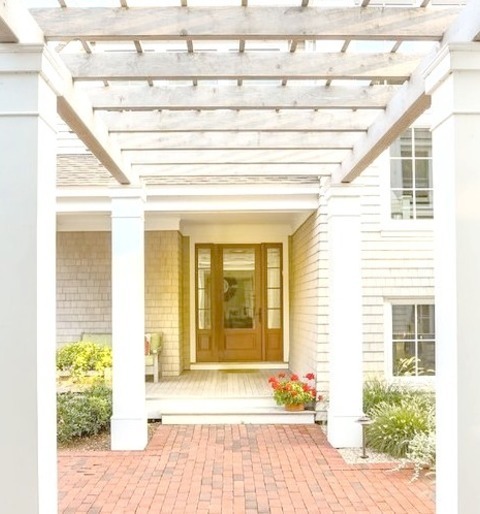
Pathway Landscape in Boston Design concepts for a sizable traditional courtyard with brick landscaping in the summer.
#shingle style#solid wood stair treads#landscape#french door#interior transom window#parquet flooring
0 notes